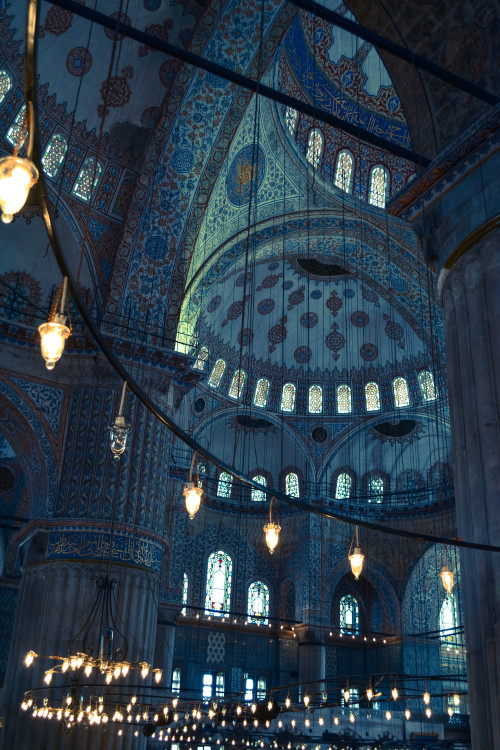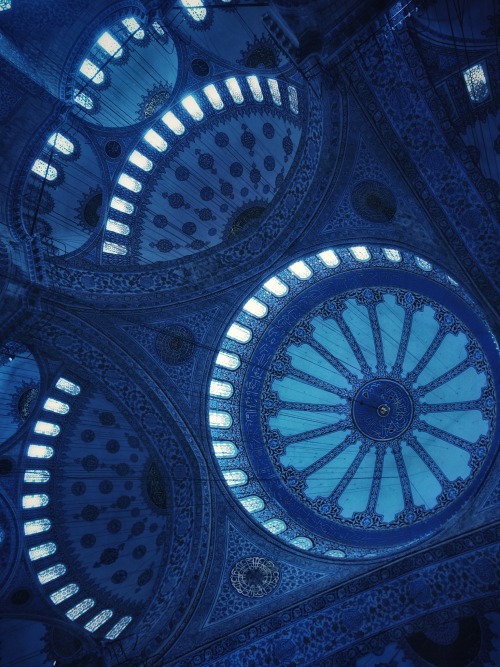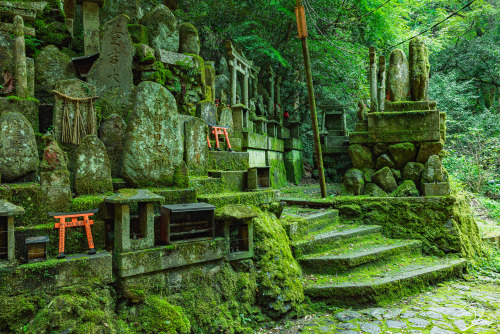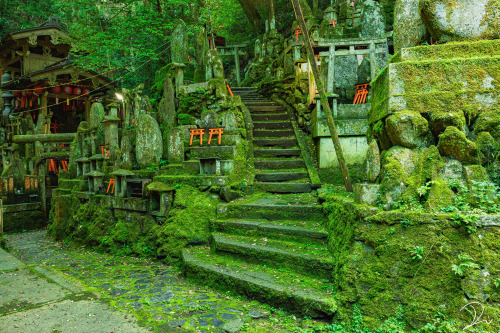Blue Mosque - Istanbul, Turkey.


Blue Mosque - Istanbul, Turkey.
More Posts from Pretty-architecture and Others





Always seeking sacred space.




Fushimi Inari Shrine was founded in 711 by the Hata family, over 80 years before Kyoto became the capital of Japan, in 794. The shrine’s principal deity is Ukanomitama-no-Mikoto - a mythical figure who is the goddess of rice and food, and who is closely identified with the (rather nebulous) god Inari.[wiki]. Photography by うさだだぬき ⛩usadanu.eth
@usalica

Hindu devotees climb colored stairs to pray at the Batu Caves temple during the Hindu festival of lights, Diwali, in Kuala Lumpur, Malaysia, Thursday, Nov. 4, 2021. Diwali is one of Hinduism’s most important festivals.
(AP Photo/Vincent Thian)






Thanh Toàn tile-roofed bridge, Thủy Thanh village
Located in Thừa Thiên-Huế province in central Vietnam, this historical countryside bridge was built in 1776 under the patronage of Mrs. Tran Thi Dao. A local philanthropist and a wife of a high-ranking court official, Mrs. Dao sponsored the bridge to be built to make it easier for the villagers to cross the canal to the fields on the other bank. Her enterprise was received with praise from the emperor and in 1925 King Khải Định decreed an altar to be built her honor at the center of the bridge.
The structure itself is supported by 18 wooden pillars and is divided into 7 room-like compartments. The stone bridgeheads are pigmented with yellow that is associated with prosperity and royalty in Vietnamese culture, and embellished with flower-themed and angular spiral reliefs with a poem written in Chinese characters on each side of the archway. The top part of the entrance features classical symbols and red, which in turn symbols good fortune and celebration. The roof is ornamented with traditional reliefs at the ends of the green glazed roof tiles and intricate roof decorations depicting dragons over the two entrances and a pair of phoenixes spreading their wings and facing the sun at the center.
The bridge is acclaimed for the high artistic, cultural and historical value it possesses and nowadays it's a popular site for festivals and tourism with hundred-year old banyan trees and traditional Vietnamese lanterns lining the location.
Recently in February 2021 a restoration process for the bridge was completed. The monument was given a fresh layer of paint, the most noticeable change being the vibrant red colour being added to the pillars, bridgeheads and interior roof. In addition golden details to the altar and silver decorations on the outside were restored.
Sources: x x x x

Hase-dera, commonly called the Hase-kannon is one of the Buddhist temples in the city of Kamakura in Kanagawa Prefecture, Japan, famous for housing a massive wooden statue of Kannon. The temple originally belonged to the Tendai sect of Buddhism, but eventually became an independent temple of the Jōdo-shū.[Wikipedia]. Photography by criss1016



角屋(島原・京都)Shimabara, Kyoto
Putra Mosque in Malaysia. It's bright Barbie pink. I saw it in a TikTok and I think it might be up your alley.
PINK MOSQUES! PINK MOSQUES! PINK MOSQUES!!
Putra Mosque, Putrajaya, Malaysia




Dimaukom Mosque, Maguindanao, Philippines


Nasir-ol-Molk Mosque, Shiraz, Iran





By Tatsolbe
Saint Petersburg, Russia









All about Hanok, the Korean traditional home, using the oldest surviving example of the Maeng clan haeng-dan! It is an example of architecture from the beginning of the Joseon dynasty (start:1392) which has been maintained according to the old way of building.
The name 행단 refers to a place with a gingko tree, which makes reference to Confucius teaching pupils under a gingko tree. In Joseon, Confucian culture became a main part of the national culture, replacing previous national Buddhism in Goryeo dynasty.
-
 bbonbonss liked this · 1 week ago
bbonbonss liked this · 1 week ago -
 craftyrebelwitch liked this · 1 week ago
craftyrebelwitch liked this · 1 week ago -
 greatpoetryfun reblogged this · 1 week ago
greatpoetryfun reblogged this · 1 week ago -
 threeravensandawitch liked this · 2 weeks ago
threeravensandawitch liked this · 2 weeks ago -
 thestarboy liked this · 2 weeks ago
thestarboy liked this · 2 weeks ago -
 oldgirlyoungcrone reblogged this · 2 weeks ago
oldgirlyoungcrone reblogged this · 2 weeks ago -
 vulpes-vixen reblogged this · 2 weeks ago
vulpes-vixen reblogged this · 2 weeks ago -
 malkavillain reblogged this · 2 weeks ago
malkavillain reblogged this · 2 weeks ago -
 malkavillain liked this · 2 weeks ago
malkavillain liked this · 2 weeks ago -
 riahchan liked this · 2 weeks ago
riahchan liked this · 2 weeks ago -
 reservedlisting reblogged this · 2 weeks ago
reservedlisting reblogged this · 2 weeks ago -
 archeryqueen95 liked this · 3 weeks ago
archeryqueen95 liked this · 3 weeks ago -
 jasonking74 reblogged this · 3 weeks ago
jasonking74 reblogged this · 3 weeks ago -
 pa-nos reblogged this · 3 weeks ago
pa-nos reblogged this · 3 weeks ago -
 pa-nos liked this · 3 weeks ago
pa-nos liked this · 3 weeks ago -
 uniquegirlphilosophy liked this · 3 weeks ago
uniquegirlphilosophy liked this · 3 weeks ago -
 noctus-natura reblogged this · 3 weeks ago
noctus-natura reblogged this · 3 weeks ago -
 shitthisissparta reblogged this · 3 weeks ago
shitthisissparta reblogged this · 3 weeks ago -
 nikblogs-stuff liked this · 3 weeks ago
nikblogs-stuff liked this · 3 weeks ago -
 rabbitindisguise reblogged this · 3 weeks ago
rabbitindisguise reblogged this · 3 weeks ago -
 idontunderstandjelly reblogged this · 3 weeks ago
idontunderstandjelly reblogged this · 3 weeks ago -
 pinkbalrog reblogged this · 3 weeks ago
pinkbalrog reblogged this · 3 weeks ago -
 theplaysickkitten reblogged this · 3 weeks ago
theplaysickkitten reblogged this · 3 weeks ago -
 chickalupe reblogged this · 3 weeks ago
chickalupe reblogged this · 3 weeks ago -
 milobahamondes reblogged this · 3 weeks ago
milobahamondes reblogged this · 3 weeks ago -
 deadradaye liked this · 3 weeks ago
deadradaye liked this · 3 weeks ago -
 tinyparticlesofdoom liked this · 3 weeks ago
tinyparticlesofdoom liked this · 3 weeks ago -
 morivae liked this · 3 weeks ago
morivae liked this · 3 weeks ago -
 pixel-machine reblogged this · 3 weeks ago
pixel-machine reblogged this · 3 weeks ago -
 insertetitulo reblogged this · 4 weeks ago
insertetitulo reblogged this · 4 weeks ago -
 noviembreshadow reblogged this · 4 weeks ago
noviembreshadow reblogged this · 4 weeks ago -
 noviembreshadow liked this · 4 weeks ago
noviembreshadow liked this · 4 weeks ago -
 miamaliwanag reblogged this · 4 weeks ago
miamaliwanag reblogged this · 4 weeks ago -
 wallsarecrumbling reblogged this · 4 weeks ago
wallsarecrumbling reblogged this · 4 weeks ago -
 adorbsstuffs liked this · 4 weeks ago
adorbsstuffs liked this · 4 weeks ago -
 indielowercase reblogged this · 4 weeks ago
indielowercase reblogged this · 4 weeks ago -
 bitchimzen reblogged this · 1 month ago
bitchimzen reblogged this · 1 month ago -
 bitchimzen liked this · 1 month ago
bitchimzen liked this · 1 month ago -
 kissankultakala liked this · 1 month ago
kissankultakala liked this · 1 month ago -
 yusahana6323 reblogged this · 1 month ago
yusahana6323 reblogged this · 1 month ago -
 chronically-done reblogged this · 1 month ago
chronically-done reblogged this · 1 month ago -
 mirri-bloodmoon liked this · 1 month ago
mirri-bloodmoon liked this · 1 month ago -
 iwilltryalittlearter liked this · 1 month ago
iwilltryalittlearter liked this · 1 month ago -
 wisecura liked this · 1 month ago
wisecura liked this · 1 month ago -
 shadowfray reblogged this · 1 month ago
shadowfray reblogged this · 1 month ago -
 shadowfray liked this · 1 month ago
shadowfray liked this · 1 month ago -
 elendilearfalas reblogged this · 1 month ago
elendilearfalas reblogged this · 1 month ago -
 queenbee2o3 reblogged this · 1 month ago
queenbee2o3 reblogged this · 1 month ago -
 queenbee2o3 liked this · 1 month ago
queenbee2o3 liked this · 1 month ago -
 zeugmalitotes liked this · 1 month ago
zeugmalitotes liked this · 1 month ago
a personal side blog where i collect images and information related to architecture from different parts of the world. pfp by thewinterden
47 posts



